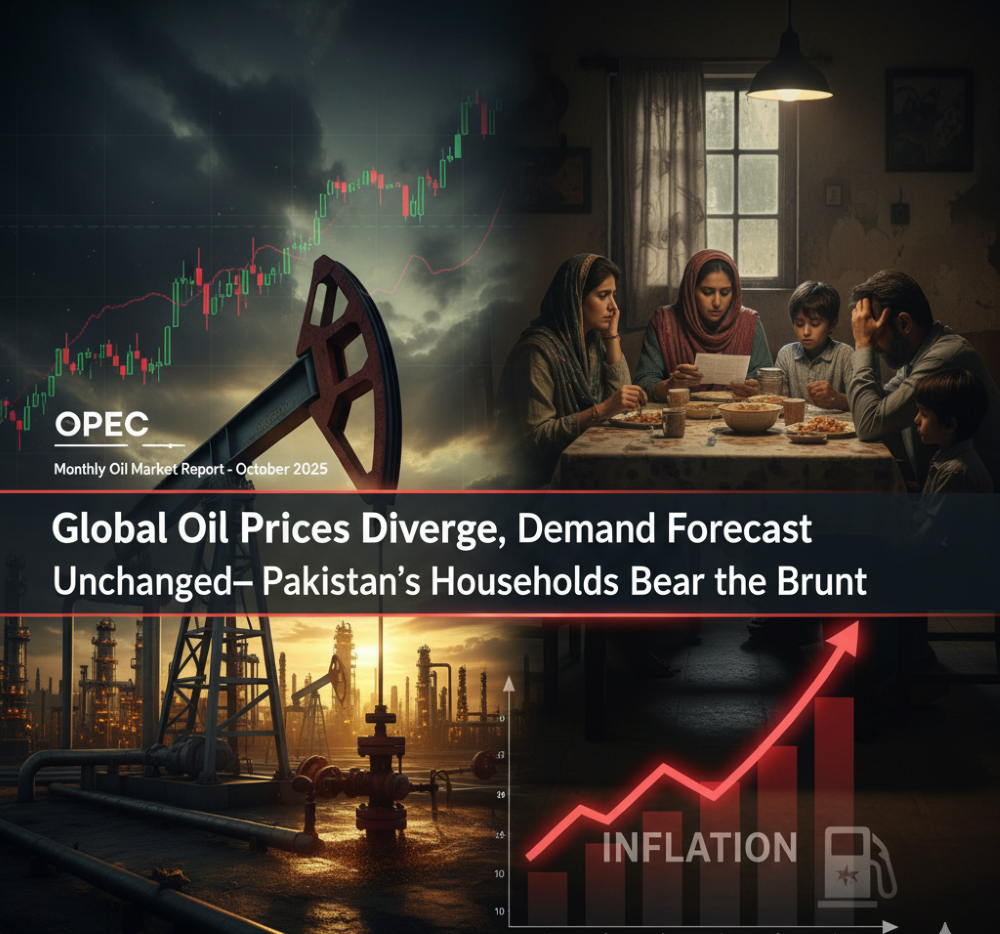VIENNA – The global oil landscape in September was one of divergence, as key crude oil benchmarks pulled in different directions, according to the OPEC Monthly Oil Market Report (MOMR) – October 2025.
Despite this price friction, the underlying predictions for global economic expansion, oil consumption, and supply remained steadfastly consistent with previous assessments, Law Today has learnt.
Pertinent to mention in context of Pakistan, the apparent normalcy of routines where many are still travelling to various destinations every day, facing relentless economic crisis in one or the other way in the country. As a repercussion of fluctuating oil prices, this crisis is severely damaging the financial capacities of ordinary citizens, as raging inflation rapidly erodes their ability to afford essential goods. Since the country heavily relies on imported oil, volatile global crude prices instantly translate into higher domestic fuel costs, which subsequently drive up the price of nearly all other commodities, leaving little hope for millions of inflation-weary households. Whether people at the helm of affairs realize or not, the challenging environment creates significant governance hurdles and sorely tests the capabilities of decision-makers.
The price action across the major crude oil baskets painted a varied and complex picture for the month: The OPEC Reference Basket (ORB) managed a slight gain, inching up by $0.66 month-on-month (m-o-m) to settle at an average of $70.39 per barrel (b). Similarly, the ICE Brent front-month contract registered a modest climb of $0.32, averaging $67.58/b.
In stark contrast, the NYMEX WTI front-month contract experienced a slip, shedding $0.49 m-o-m to average $63.53/b. This difference in trajectory caused the ICE Brent-NYMEX WTI spread to widen by $0.81, reaching $4.05/b. While forward curves across the board flattened, a critical sign of market tightness persisted, demonstrated by the front-end of the curve maintaining backwardation—a scenario where immediate delivery prices command a premium over future contracts.
In a sign of predictable global economic activity, the major forecasts for growth and oil consumption showed no change: Global economic growth forecasts for 2025 ($3.0%) were held steady, with major economic powerhouses like the US ($1.8%), the Eurozone ($1.2%), and China ($4.8%) also unchanged. Global oil demand forecasts were equally unrevised, with demand in 2025 still projected to grow by 1.3 million barrels per day (mb/d), year-on-year. The vast majority of this demand surge – approximately 1.2 mb/d – is expected to be powered by the rapidly growing economies of Non-OECD countries, with the appetite anticipated to grow further by 1.4 mb/d in 2026.
The balance of supply showed a nuanced picture of increase against shrinking reserves: Production from countries not participating in the Declaration of Cooperation (non-DoC) is on track to grow by 0.8 mb/d in 2025, primarily driven by increases from the US, Brazil, Canada, and Argentina. Meanwhile, crude oil output from DoC participants collectively rose by 630 thousand barrels per day (tb/d) in September, m-o-m, reaching an average of approximately 43.05 mb/d. The report raised a red flag on reserve levels, noting that preliminary data for August 2025 showed OECD commercial inventories dipping by 0.5 mb to stand at 2,793 mb. This inventory level is notably 92.2 mb lower than the latest five-year average, underscoring a persistent concern over low global stock coverage.
The peripheral oil markets of refining and tanker transportation displayed robust strength in September: The global refining business saw a boost, with margins increasing across all major trading hubs. This was largely attributed to a lower product output resulting from the heavy refinery maintenance season currently underway in the Northern Hemisphere. The primary impetus for this strength came from middle distillates, buoyed by limited availability and a strong export pipeline. The shipping industry saw dramatic shifts as Dirty tanker VLCC spot freight rates experienced a surge, fuelled by heavier oil outflows from the Middle East; the crucial Middle East-to-East route alone soared by 56% m-o-m. Conversely, clean tanker rates showed mixed results, as the maintenance season curtailed demand from the Middle East, though certain short-haul routes noted an improvement.
Source; OPEC Monthly Oil Market Report



